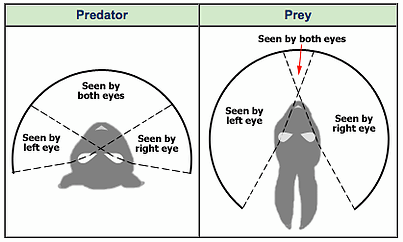How do the five senses vary in different species?
1 Answer
They vary according to species biology and ecology in order to grant them better means for survival.
Explanation:
The senses are ways through which an individual, or species, interacts with other species and the surrounding environment. Thus being, the senses can vary a lot in their use and accuracy according to the environment that a species inhabit. I'll mostly use the vision sense to explain it below.
Take us humans, for example: descending from the apes, we have developed an excelent sight, capable of tridimensionally calculating distances so we could jump between branches without missing and falling.
Most predators also have powefull directed vision in order to identify and scope in their prey. Both eagles and tigers make good examples of animals with powerful, focused eyesight. Prey, on the other hand, usually have wide, dispersed eyesight (eyes located on both sides of the head) in order to scan the surrounding environment for possible threats in wide angles. Such type of eyesight can be found in herbivorous birds and mammals such as a sparrow and a zebra, for instance.

This image pretty much illustrates the difference.
Animals that live in environments that makes seing things harder have usually evolved to rely more in other senses. Bats which live in dark caves or have nocturnal activity usuallt fly really fast and can't rely on sight, so they use vocalizations and its echoes to "map" the environment - in other words, they use hearing instead of seeing. Moles that live mostly underground and have an usually obstructed eyesight rely on their smell senses and other chemical clues to locate themsevles and find food. In a similar way, earthowrms have developed acute tactile sense to feel the vibrations of the ground around itself to help it avoiding dangerous terrain or predators.
This question has many answers, since the variability of such senses among animal groups is immense. The best way is going for a general statement and then examplifying it to show how a specific sense's mechanisms work. Hopefully this text will help you figure it out properly!
